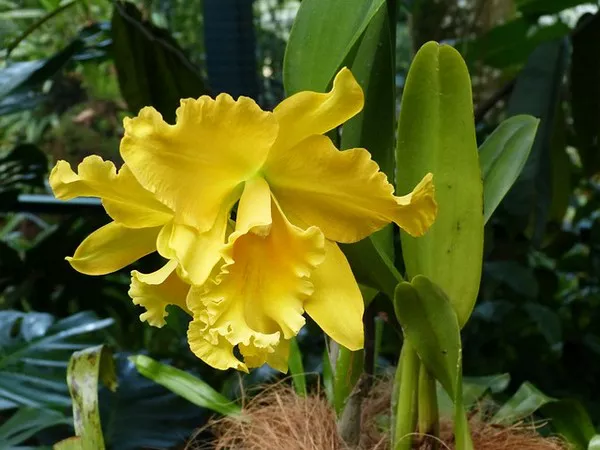In the world of gardening, sunlight often takes center stage as a crucial factor for plant growth. However, not all gardens or outdoor spaces boast ample sunlight. In fact, many areas may be shaded for various reasons, such as tall buildings, dense tree canopies, or structures like pergolas and gazebos. But fear not, for even in the depths of shade, there lies an opportunity to cultivate beauty. In this article, we delve into the realm of shade-loving flowers, exploring a diverse array of flora that flourishes despite minimal exposure to sunlight.
Understanding Shade Conditions
Before delving into the specifics of shade-loving flowers, it’s essential to understand the different types of shade. Shade can be categorized into partial shade, where the area receives filtered sunlight for part of the day, and complete shade, where little to no direct sunlight reaches the ground. Complete shade areas pose unique challenges for plant growth, as they lack the energy source necessary for photosynthesis. However, certain flowers have adapted to thrive in such conditions, making them valuable additions to shaded gardens.
Perennials for Shaded Gardens
Perennial flowers are a popular choice for shaded gardens due to their ability to return year after year. Here are some notable options:
Hostas (Hosta spp.): Known for their lush foliage, hostas are a staple in shade gardens. They produce delicate spikes of flowers in varying shades of white, lavender, and purple, adding a touch of elegance to shaded areas.
Astilbes (Astilbe spp.): With their feathery plumes of flowers, astilbes bring texture and color to shady corners. They thrive in moist, well-drained soil and come in a range of hues, from soft pinks to vibrant reds.
Bleeding Hearts (Dicentra spp.): True to their name, bleeding hearts produce heart-shaped flowers in shades of pink and white that dangle gracefully from arching stems. These perennials prefer cool, shady conditions and are sure to capture attention with their unique blooms.
Annuals for Shaded Spaces
While perennials offer long-term beauty, annual flowers provide bursts of color and vibrancy each growing season. Here are some annuals that thrive in complete shade:
Begonias (Begonia spp.): With their waxy leaves and delicate flowers, begonias are a versatile choice for shaded gardens. Tuberous begonias, in particular, boast large, showy blooms in shades of red, pink, orange, and white.
Impatiens (Impatiens spp.): Renowned for their prolific blooms and tolerance of shade, impatiens are a popular choice for adding color to dark corners. They come in a range of colors, including white, pink, purple, and salmon, and bloom continuously throughout the summer.
Coleus (Plectranthus scutellarioides): While technically not a flowering plant, coleus is prized for its vibrant foliage, which comes in an array of colors and patterns. It thrives in shady conditions and can be used to add interest and texture to garden beds and containers.
Shade-Tolerant Bulbs
Bulbous plants offer another option for introducing color to shaded areas. While many bulbs require ample sunlight to thrive, some species have adapted to shade. Here are a few examples:
Lily of the Valley (Convallaria majalis): Known for its fragrant, bell-shaped flowers, lily of the valley thrives in partial to full shade. It spreads readily via rhizomes, making it an excellent choice for ground cover in shady areas.
Siberian Squill (Scilla siberica): With its striking blue flowers, Siberian squill provides a welcome burst of color in early spring. It naturalizes easily in shaded woodlands and under trees, creating carpets of blue blooms.
Woodland Hyacinth (Hyacinthoides spp.): Also known as Spanish bluebell or wild hyacinth, this bulbous plant produces nodding clusters of bell-shaped flowers in shades of blue, pink, or white. It thrives in dappled shade and spreads readily in moist, well-drained soil.
Design Tips for Shaded Gardens
Creating a visually appealing garden in shaded areas requires careful planning and consideration. Here are some design tips to help you make the most of your shaded space:
Layering: Incorporate plants of varying heights and textures to create visual interest and depth. Taller plants can provide a backdrop for shorter ones, while foliage plants add texture and contrast.
Focal Points: Introduce focal points such as sculptures, birdbaths, or decorative containers to draw the eye and create visual intrigue within the garden.
Seasonal Interest: Select plants that offer interest throughout the seasons, whether through blooms, foliage color, or texture. This ensures that your shaded garden remains attractive year-round.
Hardscaping: Enhance the beauty of your shaded garden with carefully chosen hardscape elements such as pathways, pergolas, or seating areas. These features add structure and definition to the space.
Conclusion
While gardening in complete shade presents its challenges, it also offers a unique opportunity to explore a diverse range of shade-loving flowers. From delicate perennials to vibrant annuals and hardy bulbs, there is no shortage of options for adding beauty and color to shaded gardens. By understanding the specific needs of shade-loving plants and employing thoughtful design techniques, you can create a stunning oasis of greenery and blooms in even the darkest corners of your outdoor space. So embrace the shade and let your garden shine bright, even in the absence of sunlight.


